Akihito Taya
Image Generative Semantic Communication with Multi-Modal Similarity Estimation for Resource-Limited Networks
Apr 17, 2024Abstract:To reduce network traffic and support environments with limited resources, a method for transmitting images with low amounts of transmission data is required. Machine learning-based image compression methods, which compress the data size of images while maintaining their features, have been proposed. However, in certain situations, reconstructing a part of semantic information of images at the receiver end may be sufficient. To realize this concept, semantic-information-based communication, called semantic communication, has been proposed, along with an image transmission method using semantic communication. This method transmits only the semantic information of an image, and the receiver reconstructs the image using an image-generation model. This method utilizes one type of semantic information, but reconstructing images similar to the original image using only it is challenging. This study proposes a multi-modal image transmission method that leverages diverse semantic information for efficient semantic communication. The proposed method extracts multi-modal semantic information from an image and transmits only it. Subsequently, the receiver generates multiple images using an image-generation model and selects an output based on semantic similarity. The receiver must select the output based only on the received features; however, evaluating semantic similarity using conventional metrics is challenging. Therefore, this study explored new metrics to evaluate the similarity between semantic features of images and proposes two scoring procedures. The results indicate that the proposed procedures can compare semantic similarities, such as position and composition, between semantic features of the original and generated images. Thus, the proposed method can facilitate the transmission and utilization of photographs through mobile networks for various service applications.
Convergence Visualizer of Decentralized Federated Distillation with Reduced Communication Costs
Dec 19, 2023Abstract:Federated learning (FL) achieves collaborative learning without the need for data sharing, thus preventing privacy leakage. To extend FL into a fully decentralized algorithm, researchers have applied distributed optimization algorithms to FL by considering machine learning (ML) tasks as parameter optimization problems. Conversely, the consensus-based multi-hop federated distillation (CMFD) proposed in the authors' previous work makes neural network (NN) models get close with others in a function space rather than in a parameter space. Hence, this study solves two unresolved challenges of CMFD: (1) communication cost reduction and (2) visualization of model convergence. Based on a proposed dynamic communication cost reduction method (DCCR), the amount of data transferred in a network is reduced; however, with a slight degradation in the prediction accuracy. In addition, a technique for visualizing the distance between the NN models in a function space is also proposed. The technique applies a dimensionality reduction technique by approximating infinite-dimensional functions as numerical vectors to visualize the trajectory of how the models change by the distributed learning algorithm.
* (c) 2023 IEEE. Personal use of this material is permitted. Permission from IEEE must be obtained for all other uses, in any current or future media, including reprinting/republishing this material for advertising or promotional purposes, creating new collective works, for resale or redistribution to servers or lists, or reuse of any copyrighted component of this work in other works
Vision-Aided Frame-Capture-Based CSI Recomposition for WiFi Sensing: A Multimodal Approach
Jun 03, 2022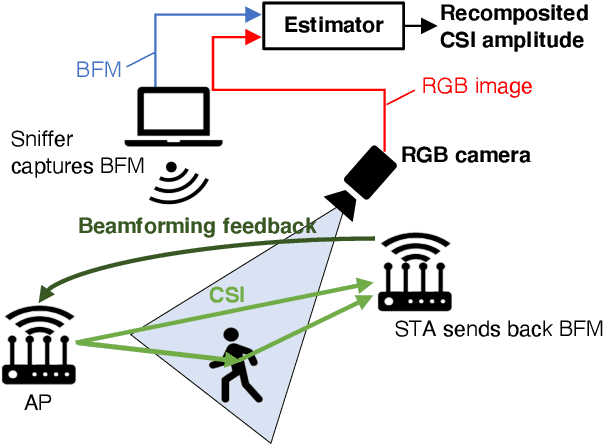
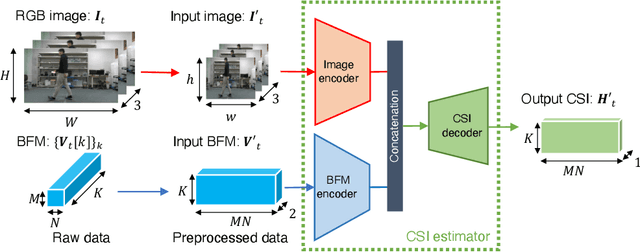
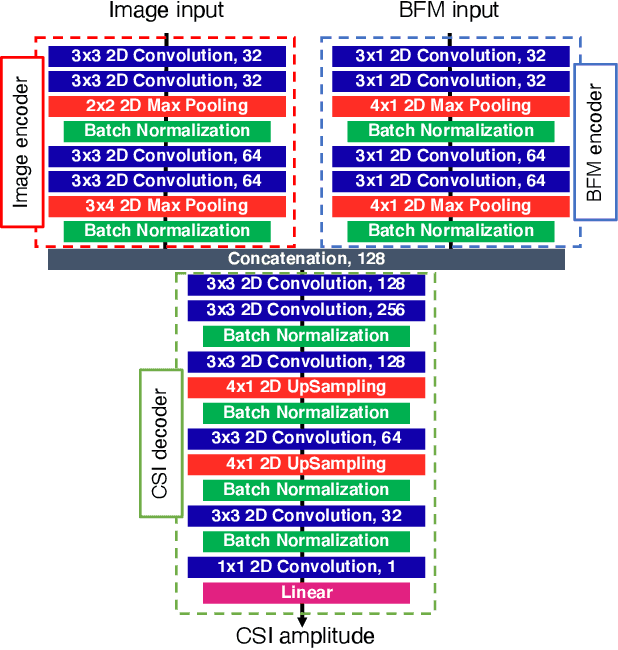

Abstract:Recompositing channel state information (CSI) from the beamforming feedback matrix (BFM), which is a compressed version of CSI and can be captured because of its lack of encryption, is an alternative way of implementing firmware-agnostic WiFi sensing. In this study, we propose the use of camera images toward the accuracy enhancement of CSI recomposition from BFM. The key motivation for this vision-aided CSI recomposition is to draw a first-hand insight that the BFM does not fully involve spatial information to recomposite CSI and that this could be compensated by camera images. To leverage the camera images, we use multimodal deep learning, where the two modalities, i.e., images and BFMs, are integrated to recomposite the CSI. We conducted experiments using IEEE 802.11ac devices. The experimental results confirmed that the recomposition accuracy of the proposed multimodal framework is improved compared to the single-modal framework only using images or BFMs.
Frame-Capture-Based CSI Recomposition Pertaining to Firmware-Agnostic WiFi Sensing
Oct 29, 2021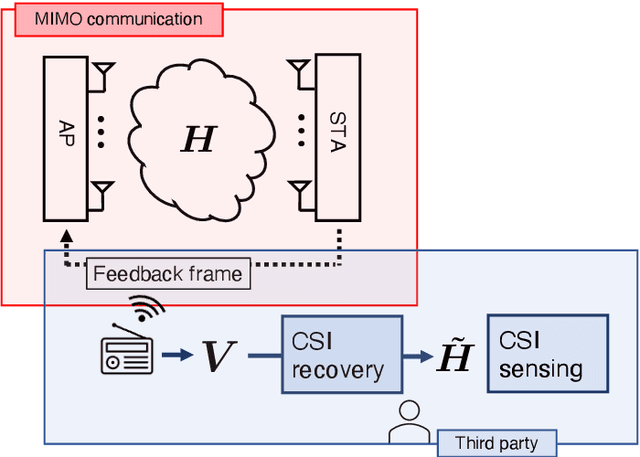
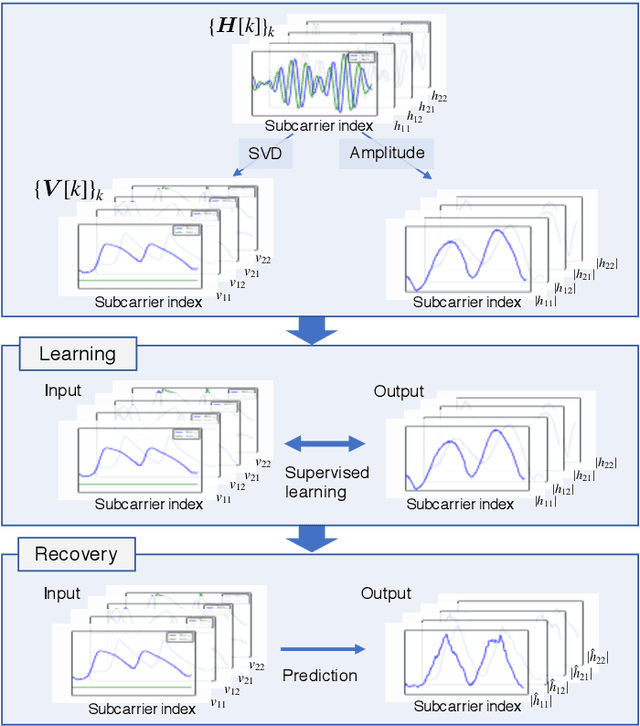
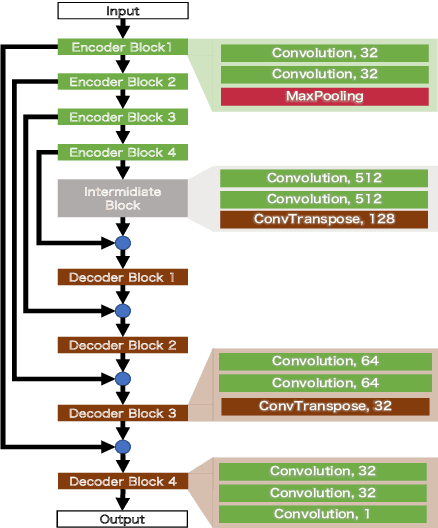
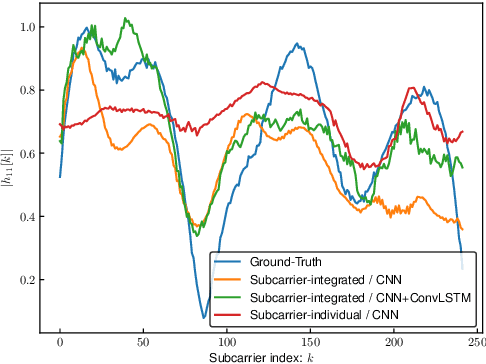
Abstract:With regard to the implementation of WiFi sensing agnostic according to the availability of channel state information (CSI), we investigate the possibility of estimating a CSI matrix based on its compressed version, which is known as beamforming feedback matrix (BFM). Being different from the CSI matrix that is processed and discarded in physical layer components, the BFM can be captured using a medium-access-layer frame-capturing technique because this is exchanged among an access point (AP) and stations (STAs) over the air. This indicates that WiFi sensing that leverages the BFM matrix is more practical to implement using the pre-installed APs. However, the ability of BFM-based sensing has been evaluated in a few tasks, and more general insights into its performance should be provided. To fill this gap, we propose a CSI estimation method based on BFM, approximating the estimation function with a machine learning model. In addition, to improve the estimation accuracy, we leverage the inter-subcarrier dependency using the BFMs at multiple subcarriers in orthogonal frequency division multiplexing transmissions. Our simulation evaluation reveals that the estimated CSI matches the ground-truth amplitude. Moreover, compared to CSI estimation at each individual subcarrier, the effect of the BFMs at multiple subcarriers on the CSI estimation accuracy is validated.
Decentralized and Model-Free Federated Learning: Consensus-Based Distillation in Function Space
Apr 02, 2021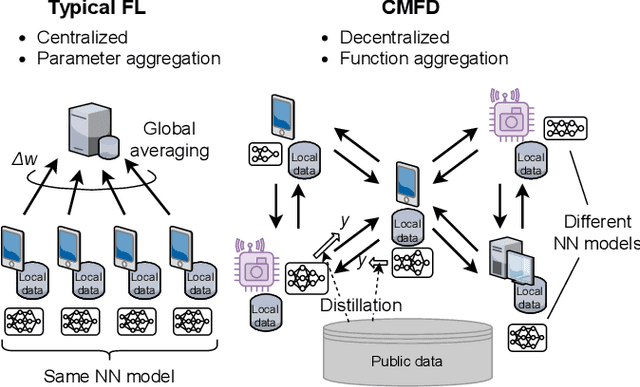
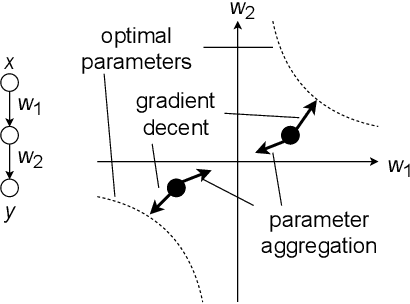

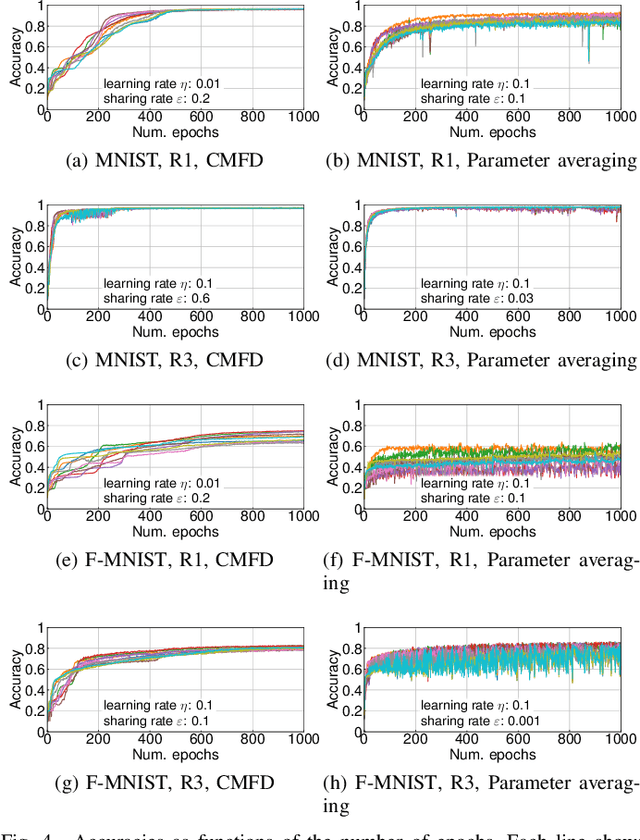
Abstract:This paper proposes a decentralized FL scheme for IoE devices connected via multi-hop networks. FL has gained attention as an enabler of privacy-preserving algorithms, but it is not guaranteed that FL algorithms converge to the optimal point because of non-convexity when using decentralized parameter averaging schemes. Therefore, a distributed algorithm that converges to the optimal solution should be developed. The key idea of the proposed algorithm is to aggregate the local prediction functions, not in a parameter space but in a function space. Since machine learning tasks can be regarded as convex functional optimization problems, a consensus-based optimization algorithm achieves the global optimum if it is tailored to work in a function space. This paper at first analyzes the convergence of the proposed algorithm in a function space, which is referred to as a meta-algorithm. It is shown that spectral graph theory can be applied to the function space in a similar manner as that of numerical vectors. Then, a CMFD is developed for NN as an implementation of the meta-algorithm. CMFD leverages knowledge distillation to realize function aggregation among adjacent devices without parameter averaging. One of the advantages of CMFD is that it works even when NN models are different among the distributed learners. This paper shows that CMFD achieves higher accuracy than parameter aggregation under weakly-connected networks. The stability of CMFD is also higher than that of parameter aggregation methods.
 Add to Chrome
Add to Chrome Add to Firefox
Add to Firefox Add to Edge
Add to Edge